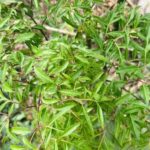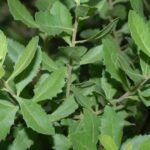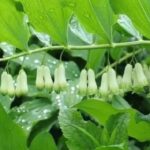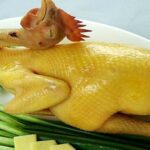A plethora of medicinal herbs for liver ailments can be found growing wild by streams, in forests, and around homes. Here are five of them:
1. Cà Gai Leo
Cà gai leo, also known as wild eggplant, is a member of the nightshade family. It grows abundantly across northern and central regions of Vietnam. The roots are typically dug up, cleaned, and dried to be used in traditional medicine. Cà gai leo is believed to have wind-dispersing and detoxifying properties, and it is used to treat bone and joint pain, coughs, whooping cough, cirrhosis, and snake bites.
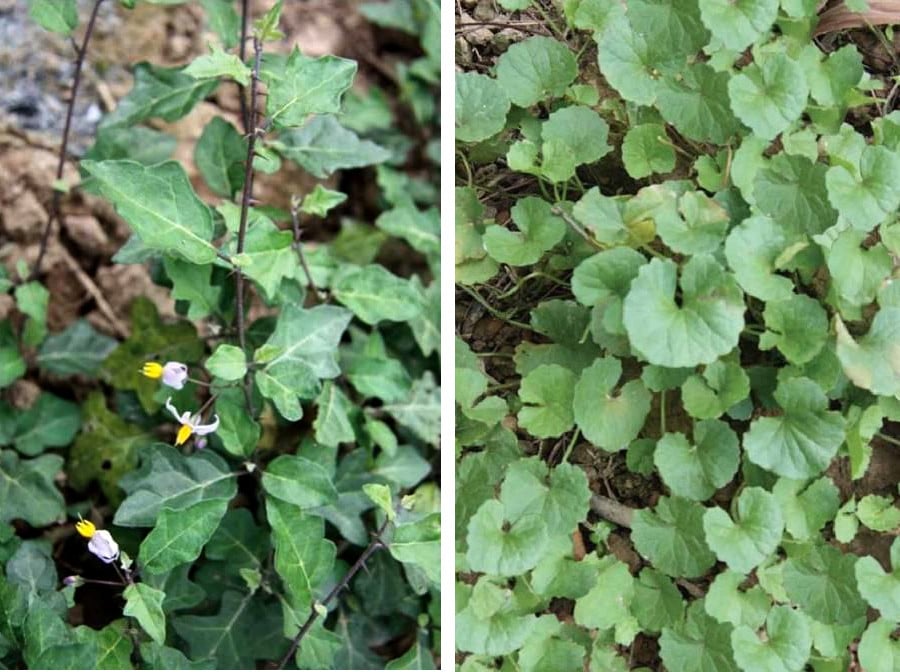
Cà gai leo (left) and rau má (right) are two medicinal plants with a variety of health benefits. (Illustrative image)
2. Dành Dành
Dành dành, or gardenia fruit, belongs to the coffee family. This evergreen shrub grows to about 1-2 meters in height and is commonly found wild by streams in mountainous areas. The vibrant yellow fruits are harvested in autumn, dried, and used in traditional medicine. Dành dành is believed to possess cooling properties and is used to treat fever, restlessness, insomnia, jaundice, difficult urination, and bleeding disorders.
3. Rau Má
Rau má, or pennywort, is a member of the Saxifrage family. It grows wild throughout Vietnam and has a bitter, pungent taste. It can be consumed fresh or dried. Rau má is considered a cooling herb in traditional medicine and is used to treat fever, boils, jaundice, nosebleeds, constipation, coughs, and urinary tract issues.
It can be crushed to extract the juice or prepared as a dried herb infusion. When combined with grass charcoal, it is believed to have hemostatic properties.
4. Phàn Đen
Phàn đen, or black alum, is a member of the Euphorbiaceae family. It grows wild in many parts of Asia, including Vietnam, and is also cultivated for its medicinal properties. The bark and leaves, either fresh or dried, are used in traditional medicine. The bark has a dark brown outer layer and a reddish-brown inner layer, and it is used to treat difficult urination.
5. Diệp Hạ Châu
Diệp hạ châu, or spreading hogweed, is another member of the Euphorbiaceae family. This herb grows wild throughout tropical regions and is commonly found in Vietnam. It is believed to possess detoxifying, antiseptic, and cholagogic properties. It is used to treat hepatitis, sore throat, mastitis, menstrual disorders, nephritis, urinary stones, boils, and skin itching.
Fresh leaves can be crushed and applied topically, or the herb can be dried and prepared as a decoction.
The Familiar Vegetable in Vietnam, Once Only Fed to Pigs, Now Contains “Gold” in its Roots and Sells Like Hotcakes!
Introducing the ultimate delicacy for liquor aficionados – an exotic root steeped in tradition and packed with potent flavors. This prized root, meticulously cultivated and carefully selected, commands a premium price among connoisseurs. Immerse yourself in a sensory journey as you uncork the essence of this exquisite ingredient, meticulously transformed into a refined alcoholic beverage. Prepare to be captivated by its complex notes and subtle nuances, an indulgent experience that transcends the ordinary.
5 Types of People Who Should Avoid Eating Chicken: A Word of Caution for These Individuals
“Chicken: A Nutritional Powerhouse, But Who Should Avoid It?”
Is chicken a healthy option for everyone? While chicken is packed with essential nutrients and is a great source of protein, there are certain individuals who should exercise caution when consuming this popular meat. In this article, we will explore the benefits of chicken and uncover the specific groups of people who should refrain from indulging. Stay tuned to discover if you fall into any of these categories and learn more about making informed dietary choices.

























